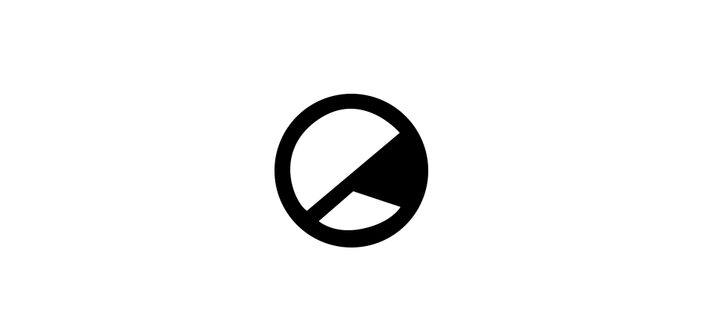NBC totally did me dirty with this one. I’m never getting over it.
When NBC cancelled Hannibal after 3 seasons my world caved in. Albeit I was only 16 at the time, but it seemed like the worst thing that could ever happen. Life was over. If I didn’t have Mads Mikkelsen as the eldritch, yet seductive cannibalistic serial killer, life became utterly meaningless and I was distraught at the injustice served to Bryan Fuller’s avant-garde horror drama series.
Fuller’s creation, acting as a prequel for Red Dragon, with hints of David Cronenberg and Michael Mann, David Lynch and Stanley Kubrick, has a formal ambition that is rare for television. It reflexively turns the ordinary into alien, and vice versa, which is where the beauty of the show stems from. It shows us our deepest darkest fears, but at the same time makes it so beautiful we don’t question; we simply absorb the majestic masterpiece. One reason I was, and still am, obsessed with this show is that despite it being a ‘cop show’, nothing about this show is a regular crime-drama. In fact, it’s more of a pretentious art film. Even though the show uses regular cop-show procedurals, the show avoids falling into the trap of being a simple detective-and-sidekick series such as Sherlock and Luther.
The show is filled with the most complex and unlikely of personalities for a ‘crime-drama’ and the casting amplifies these characters, making it impossible for you to not engage and become dedicated to them as people. Hannibal is supposed to be the villain, but by the end of the first episode, the very aestheticism he holds towards the fine arts will cloud your judgement. You’ll find yourself questioning your morals as you begin rooting for the titular character and his malefic habits. As if the fondness for the arts wasn’t enough, he has a way of sending the FBI on a wild goose chase and bailing himself out of impossible situations. Mikkelsen himself is the king of micro-expressions, a small lift of an eyebrow, or quirks of the mouth that subtly convey everything he’s thinking. Mikkelsen’s performance as Doctor Lecter was so elegant; his fluidity and subtle expressions offered us more in physicality than Anthony Hopkins ever did. It’s almost hard to believe that someone as level-tempered and refined as Hannibal would strike out and brutally murder in cold blood, as even his killing is refined and faultless.
And yet, even the gore is sophisticated. It’s not all screaming and chainsaws – there’s a disarming fairytale quality to the world of Hannibal, in part because the murders, with few exceptions, lack the misogynistic underpinning of real-life serial killings, or even the snappy kinks to Harris’ books. The corpses are displayed with a theme of theatricality, mirroring famous Italian oil paintings and containing sequences in which bodies are stitched into frescoes and twisted into grotesque displays that warp and challenge the definition of ‘art’. Skin is stretched into angelic yet demonic wings, corpses pile up on nightmarish totem poles and belladonna is planted in heart cavities. It almost crosses the line of absurdity, but Fuller has a way of moulding these horrific scenes into dreamlike sequences chock-full with baroque violence. This certainly makes the show difficult to watch, unless you have a lead-lined stomach, but these pictures and scenes slowly coalesce into metaphors for morality and loss. The morbid and sinister elements of the show do leave a foul taste in the air, but the clear use of pastiche is for people with an acquired taste for the finer and more trivial things. It’s clear that nobody can deny the pure beauty of the cinematography which is enhanced by the underlying darkness and sadism of every episode.
It’s not just Hannibal himself that’s one of the show’s recurring villains. Mason Verger the vile aristocrat, capable of inflicting the most horrific and inhumane abuse on his sister Margo, links the characters together as Margo visits the cannibalistic psychiatrist. This opens up an entirely new storyline and a world of flesh-eating pigs which provide glimpses of how the bourgeoisie of America waste their good will and fortune. Season 3, a manhunt through idyllic Italian villages, still had time to incorporate Francis Dolarhyde (Richard Armitage) who has an infatuation with Wiliam Blake’s poetry and blurs the lines between monster, man and feral animal. This solidifies the relationship between Harris’ writing and the writing of the show, Dolarhyde becoming something of an antagonist for Will Graham (Hugh Dancy) and Hannibal straying from the regular plotline of Red Dragon, which is where we first see Dolarhyde.
The show is so brilliantly made that the tension and explosive moments come at just the right time. The most intense part of the show is when Hannibal and Will become locked in a game of intelligence chess, each one waiting for the other to make a move so he can out-wit previous efforts. There’s no denying that every character in this show has their own villainous tendencies such as Jack Crawford (Laurence Fishburne), head of the Behaviour Science Unit at the FBI, who pushes Will Graham to lengths that go way beyond the matter of ethics.
There’s been speculation of a fourth series over the 5 years since the axe was brought down by NBC. Netflix has been a popular contender to snatch up the popular horror show, and after the streaming platform added season 3, my levels of hope went through the roof. The prospect of getting a fourth season would be something close to euphoria. I’ll never forgive NBC for giving such an unjust conclusion to the show. Here’s to hoping for a well-needed re-birthing of fiction’s most loved cannibal.
Hannibal is available to watch on Netflix now. You can watch the trailer below.



